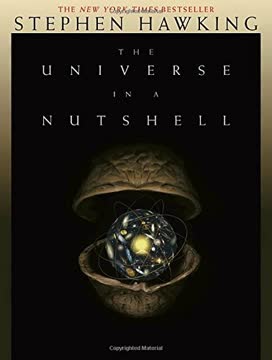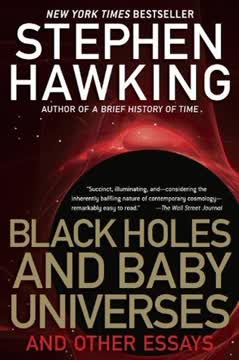Key Takeaways
1. The Universe: From Ancient Myths to Modern Science
We find ourselves in a bewildering world. We want to make sense of what we see around us and to ask: What is the nature of the universe? What is our place in it, and where did it and we come from? Why is it the way it is?
Ancient explanations: Humans have long sought to understand the universe, initially through myths and religious beliefs. These early theories often involved spirits or gods controlling natural phenomena.
Scientific revolution: The scientific method gradually replaced mythical explanations, leading to more accurate models of the universe:
- Aristotle and Ptolemy: Earth-centered universe
- Copernicus and Galileo: Sun-centered solar system
- Newton: Laws of motion and gravity
- Einstein: Theory of relativity
Modern cosmology: Today, we have a vastly expanded view of the universe, encompassing billions of galaxies and spanning billions of light-years. Our understanding continues to evolve through observation, experimentation, and theoretical work.
2. Relativity: Redefining Space, Time, and Gravity
The discovery that the speed of light appeared the same to every observer, no matter how he was moving, led to the theory of relativity—and the abandoning of the idea that there was a unique absolute time.
Special relativity: Einstein's 1905 theory introduced revolutionary concepts:
- The speed of light is constant for all observers
- Time dilation: Moving clocks run slower
- Length contraction: Moving objects appear shorter
- Mass-energy equivalence: E = mc²
General relativity: Einstein's 1915 theory describes gravity as the curvature of spacetime:
- Massive objects warp the fabric of spacetime
- Planets orbit the Sun by following curved spacetime
- Gravitational time dilation: Time runs slower in stronger gravitational fields
- Predicted phenomena: gravitational waves, black holes, and the expansion of the universe
3. Quantum Mechanics: The Uncertain Nature of Reality
The uncertainty principle signaled an end to Laplace's dream of a theory of science, a model of the universe that would be completely deterministic.
Quantum revolution: In the early 20th century, scientists discovered that the classical laws of physics break down at the atomic scale.
Key concepts of quantum mechanics:
- Wave-particle duality: Particles can behave as waves and vice versa
- Uncertainty principle: Cannot simultaneously know a particle's exact position and momentum
- Probabilistic nature: Can only predict the probability of outcomes, not definite results
- Quantum superposition: Particles can exist in multiple states simultaneously
- Entanglement: Particles can be correlated over large distances
Implications: Quantum mechanics challenges our intuitive understanding of reality, suggesting a fundamentally probabilistic universe at the smallest scales.
4. The Big Bang: The Origin and Evolution of the Universe
We now know that our galaxy is only one of some hundred thousand million that can be seen using modern telescopes, each galaxy itself containing some hundred thousand million stars.
Evidence for the Big Bang:
- Expansion of the universe (Hubble's Law)
- Cosmic microwave background radiation
- Abundance of light elements (hydrogen and helium)
Timeline of the universe:
- 0 seconds: Big Bang
- 10⁻⁴³ seconds: Planck era (quantum gravity)
- 10⁻³⁵ seconds: Inflationary period
- 3 minutes: Nucleosynthesis begins
- 380,000 years: Formation of atoms (recombination)
- 400 million years: First stars and galaxies form
- 13.8 billion years: Present day
Ongoing questions: Dark matter, dark energy, and the ultimate fate of the universe continue to challenge our understanding of cosmic evolution.
5. Black Holes: Where Physics Breaks Down
Black holes are not really black after all: they glow like a hot body, and the smaller they are, the more they glow.
Formation: Black holes form when massive stars collapse or galaxies collide, creating regions where gravity is so strong that nothing can escape.
Key properties of black holes:
- Event horizon: Point of no return for light and matter
- Singularity: Infinitely dense point at the center
- Hawking radiation: Theoretical emission of particles, causing black holes to slowly evaporate
- Time dilation: Time slows down dramatically near the event horizon
Significance: Black holes challenge our understanding of physics, as general relativity and quantum mechanics break down in describing their properties.
6. The Arrow of Time: Why We Remember the Past but Not the Future
The increase of disorder or entropy is what distinguishes the past from the future, giving a direction to time.
Thermodynamic arrow of time:
- Second law of thermodynamics: Entropy (disorder) increases over time
- Explains why we can remember the past but not the future
- Linked to the expansion of the universe
Other arrows of time:
- Psychological: We perceive time as flowing from past to future
- Cosmological: The universe expands rather than contracts
Implications: The arrow of time raises questions about the nature of causality, free will, and the possibility of time travel.
7. The Quest for a Theory of Everything: Unifying Physics
If we do find a complete set of basic laws, there will still be in the years ahead the intellectually challenging task of developing better approximation methods so that we can make useful predictions of the probable outcomes in complicated and realistic situations.
Current state of physics:
- Standard Model: Describes fundamental particles and forces (except gravity)
- General Relativity: Describes gravity and large-scale structure of the universe
Attempts at unification:
- String theory: Proposes tiny vibrating strings as fundamental building blocks
- M-theory: Extends string theory to include multiple dimensions
- Loop quantum gravity: Attempts to reconcile quantum mechanics with general relativity
Challenges: Developing a quantum theory of gravity and explaining phenomena like dark matter and dark energy remain major goals in physics.
8. The Anthropic Principle: Why is the Universe the Way It Is?
The weak anthropic principle states that in a universe that is large or infinite in space and/or time, the conditions necessary for the development of intelligent life will be met only in certain regions that are limited in space and time.
Fine-tuning problem: Many fundamental constants of nature seem precisely tuned to allow for the existence of life.
Possible explanations:
- Chance: We got lucky in our universe
- Design: A creator fine-tuned the universe for life
- Multiverse: Our universe is one of many, each with different properties
Implications: The anthropic principle raises philosophical questions about the nature of scientific explanation and the role of observers in the universe.
9. The Future of Physics: What Lies Ahead
Even if we do discover a complete unified theory, it would not mean that we would be able to predict events in general, for two reasons. The first is the limitation that the uncertainty principle of quantum mechanics sets on our powers of prediction. There is nothing we can do to get around that.
Ongoing research areas:
- Dark matter and dark energy
- Quantum computing and information
- Gravitational waves
- Particle physics beyond the Standard Model
Technological challenges:
- Building more powerful particle accelerators
- Developing more sensitive detectors for rare phenomena
- Advancing computational methods for complex simulations
Philosophical implications:
- Limits of knowledge: Will we ever have a complete understanding of the universe?
- Nature of reality: How do our theories relate to the underlying nature of existence?
- Role of consciousness: Does the observer play a fundamental role in quantum mechanics?
Human Quest for Knowledge | stephen-hawking
diff --git a/summaries/A Briefer History of Time.md b/summaries/A Briefer History of Time.md
index 0ffefea..1cf84ba 100644
--- a/summaries/A Briefer History of Time.md
+++ b/summaries/A Briefer History of Time.md
@@ -1 @@
-1. The Universe: From Ancient Myths to Modern Science
-2. Relativity: Redefining Space, Time, and Gravity
-3. Quantum Mechanics: The Uncertain Nature of Reality
-4. The Big Bang: The Origin and Evolution of the Universe
-5. Black Holes: Where Physics Breaks Down
-6. The Arrow of Time: Why We Remember the Past but Not the Future
-7. The Quest for a Theory of Everything: Unifying Physics
-8. The Anthropic Principle: Why is the Universe the Way It Is?
-9. The Future of Physics: What Lies Ahead
+1. From Ancient Myths to Modern Cosmology: Our Evolving Understanding of the Universe
+2. Einstein's Relativity: Revolutionizing Concepts of Space, Time, and Gravity
+3. Quantum Mechanics: Unveiling the Probabilistic Nature of Reality at the Smallest Scales
+4. The Big Bang Theory: Tracing the Origin and Evolution of Our Expanding Universe
+5. Black Holes: Extreme Cosmic Phenomena Where Physics Breaks Down
+6. The Arrow of Time: Exploring Why We Experience Time in One Direction
+7. Unifying Physics: The Ongoing Quest for a Theory of Everything
+8. The Anthropic Principle: Examining Why the Universe Appears Fine-Tuned for Life
+9. The Future of Physics: Challenges and Implications of Our Quest for Ultimate Understanding
-### 1. The Universe: From Ancient Myths to Modern Science
+### 1. From Ancient Myths to Modern Cosmology: Our Evolving Understanding of the Universe
We find ourselves in a bewildering world. We want to make sense of what we see around us and to ask: What is the nature of the universe? What is our place in it, and where did it and we come from? Why is it the way it is?
@@ -26 @@
-### 2. Relativity: Redefining Space, Time, and Gravity
+### 2. Einstein's Relativity: Revolutionizing Concepts of Space, Time, and Gravity
The discovery that the speed of light appeared the same to every observer, no matter how he was moving, led to the theory of relativity—and the abandoning of the idea that there was a unique absolute time.
@@ -43 @@
- Gravitational time dilation: Time runs slower in stronger gravitational fields
- Predicted phenomena: gravitational waves, black holes, and the expansion of the universe
-### 3. Quantum Mechanics: The Uncertain Nature of Reality
+### 3. Quantum Mechanics: Unveiling the Probabilistic Nature of Reality at the Smallest Scales
The uncertainty principle signaled an end to Laplace's dream of a theory of science, a model of the universe that would be completely deterministic.
@@ -58 @@
-### 4. The Big Bang: The Origin and Evolution of the Universe
+### 4. The Big Bang Theory: Tracing the Origin and Evolution of Our Expanding Universe
We now know that our galaxy is only one of some hundred thousand million that can be seen using modern telescopes, each galaxy itself containing some hundred thousand million stars.
@@ -78 @@
-### 5. Black Holes: Where Physics Breaks Down
+### 5. Black Holes: Extreme Cosmic Phenomena Where Physics Breaks Down
Black holes are not really black after all: they glow like a hot body, and the smaller they are, the more they glow.
@@ -92 @@
Significance: Black holes challenge our understanding of physics, as general relativity and quantum mechanics break down in describing their properties.
-### 6. The Arrow of Time: Why We Remember the Past but Not the Future
+### 6. The Arrow of Time: Exploring Why We Experience Time in One Direction
The increase of disorder or entropy is what distinguishes the past from the future, giving a direction to time.
@@ -107 @@
-### 7. The Quest for a Theory of Everything: Unifying Physics
+### 7. Un
Last updated:
FAQ
What's "A Briefer History of Time" about?
- Overview: "A Briefer History of Time" by Stephen Hawking and Leonard Mlodinow is a simplified version of Hawking's earlier work, "A Brief History of Time." It aims to make complex concepts in cosmology more accessible to a broader audience.
- Content Focus: The book covers fundamental questions about the universe, such as its origin, structure, and eventual fate, while explaining key scientific theories like relativity and quantum mechanics.
- Purpose: It seeks to update readers on recent developments in theoretical physics and cosmology, including string theory and the unification of forces.
- Approach: The authors use clear language and illustrations to explain scientific concepts, making it suitable for readers without a deep background in physics.
Why should I read "A Briefer History of Time"?
- Simplified Concepts: The book breaks down complex scientific theories into more understandable terms, making it ideal for those new to cosmology.
- Updated Information: It includes recent advancements in physics and cosmology, providing a current perspective on the universe's mysteries.
- Engaging Style: Hawking and Mlodinow use engaging narratives and analogies to explain scientific phenomena, making the learning process enjoyable.
- Broad Appeal: Whether you're a science enthusiast or a curious reader, the book offers insights into the universe's workings that are both enlightening and thought-provoking.
What are the key takeaways of "A Briefer History of Time"?
- Universe's Nature: The universe is vast, dynamic, and governed by laws that we are continually striving to understand, such as relativity and quantum mechanics.
- Scientific Theories: The book explains key theories like the Big Bang, black holes, and the expanding universe, highlighting their significance in understanding cosmic phenomena.
- Unified Theory Quest: It discusses the ongoing quest for a unified theory that combines all fundamental forces of nature, including gravity, electromagnetism, and nuclear forces.
- Role of Time: Time is not absolute but relative, intertwined with space, and affected by gravity, challenging our traditional perceptions.
How does "A Briefer History of Time" explain the Big Bang theory?
- Origin of the Universe: The Big Bang theory posits that the universe began as a singularity, a point of infinite density and temperature, about 13.7 billion years ago.
- Expansion: Following the Big Bang, the universe expanded rapidly, cooling as it grew, leading to the formation of fundamental particles and eventually atoms.
- Cosmic Microwave Background: The book explains how the residual radiation from the Big Bang, known as the cosmic microwave background, provides evidence for this theory.
- Inflationary Model: It introduces the concept of inflation, a rapid expansion that smoothed out the universe's initial irregularities, leading to the large-scale structure we observe today.
What is the significance of black holes in "A Briefer History of Time"?
- Definition: Black holes are regions in space where gravity is so strong that nothing, not even light, can escape from them.
- Formation: They form when massive stars collapse under their own gravity, creating a singularity surrounded by an event horizon.
- Scientific Importance: Black holes challenge our understanding of physics, particularly in the realms of general relativity and quantum mechanics.
- Research and Observation: The book discusses how black holes are studied through their effects on nearby matter and radiation, providing insights into the universe's extreme conditions.
How does "A Briefer History of Time" address the concept of time travel?
- Relativity and Time: The book explains how Einstein's theory of relativity allows for the possibility of time travel, at least theoretically, by affecting the flow of time.
- Wormholes: It introduces the concept of wormholes, hypothetical passages through space-time that could potentially allow for travel between different points in time.
- Scientific Challenges: While time travel is a popular science fiction theme, the book discusses the scientific challenges and paradoxes, such as causality issues, that make it unlikely with current understanding.
- Chronology Protection: Hawking's idea of chronology protection suggests that the laws of physics may prevent time travel to avoid paradoxes, maintaining the universe's logical consistency.
What role does quantum mechanics play in "A Briefer History of Time"?
- Fundamental Theory: Quantum mechanics is presented as a fundamental theory that describes the behavior of particles at the smallest scales, where classical physics fails.
- Uncertainty Principle: The book explains Heisenberg's uncertainty principle, which states that certain pairs of properties, like position and velocity, cannot be simultaneously known with precision.
- Wave-Particle Duality: It discusses the dual nature of particles, which exhibit both wave-like and particle-like properties, challenging traditional notions of matter.
- Quantum Gravity: The quest for a quantum theory of gravity, which would unify general relativity and quantum mechanics, is highlighted as a major goal in modern physics.
How does "A Briefer History of Time" explain the unification of forces?
- Four Fundamental Forces: The book outlines the four fundamental forces: gravity, electromagnetism, the weak nuclear force, and the strong nuclear force.
- Electroweak Unification: It describes how the electromagnetic and weak nuclear forces have been unified into a single electroweak force at high energies.
- Grand Unified Theories (GUTs): The book discusses attempts to unify the electroweak force with the strong nuclear force, though gravity remains separate.
- String Theory: String theory is introduced as a potential framework for unifying all forces, suggesting that particles are one-dimensional strings rather than point-like entities.
What are the best quotes from "A Briefer History of Time" and what do they mean?
- "The boundary condition of the universe is that it has no boundary." This quote reflects the idea that the universe is self-contained and finite, yet without edges or singularities, challenging traditional concepts of beginnings and endings.
- "We see the universe the way it is because we exist." This statement encapsulates the anthropic principle, suggesting that the universe's conditions are such that they allow for the existence of observers like us.
- "Equations are more important to me, because politics is for the present, but an equation is something for eternity." This quote from Einstein, included in the book, highlights the timeless nature of scientific discovery compared to the transient nature of human affairs.
- "If we find the answer to that, it would be the ultimate triumph of human reason—for then we would know the mind of God." This reflects Hawking's view that understanding the universe's fundamental laws would be akin to understanding the divine, emphasizing the profound nature of scientific inquiry.
How does "A Briefer History of Time" address the concept of a unified theory?
- Ultimate Goal: The book presents the search for a unified theory as the ultimate goal of physics, aiming to explain all fundamental forces and particles within a single framework.
- Historical Context: It traces the history of attempts to unify forces, from Newton's laws to Einstein's relativity and beyond, highlighting the progress and challenges faced.
- Current Theories: String theory and supergravity are discussed as leading candidates for a unified theory, though neither is complete or fully proven.
- Philosophical Implications: The pursuit of a unified theory raises philosophical questions about the nature of reality, the role of a creator, and the limits of human understanding.
What is the significance of the anthropic principle in "A Briefer History of Time"?
- Definition: The anthropic principle suggests that the universe's laws and constants are as they are because they allow for the existence of observers like us.
- Weak vs. Strong: The book distinguishes between the weak anthropic principle, which applies to specific regions of the universe, and the strong anthropic principle, which posits multiple universes or regions with varying laws.
- Implications for Science: It challenges scientists to consider why the universe's conditions are just right for life, influencing theories about the universe's origin and structure.
- Criticism and Debate: The anthropic principle is controversial, with some viewing it as a tautology or a philosophical rather than scientific explanation.
How does "A Briefer History of Time" explain the nature of scientific theories?
- Model of the Universe: A scientific theory is described as a model that explains a wide range of observations and makes predictions about future events.
- Provisional Nature: The book emphasizes that scientific theories are always provisional, subject to revision or replacement as new evidence emerges.
- Criteria for Good Theories: A good theory should be simple, consistent, and able to make testable predictions, allowing it to be falsified if incorrect.
- Role of Theories: Scientific theories help us understand the universe's workings, guiding research and expanding our knowledge of the natural world.
Review Summary
A Briefer History of Time is widely praised as an accessible introduction to complex physics concepts for non-scientists. Readers appreciate Hawking's clear explanations and enthusiasm, though some find parts challenging. The book covers topics like relativity, quantum mechanics, and cosmology. Many reviewers recommend it for those curious about the universe, noting it sparks wonder and expands understanding. Some suggest it's best suited for high school students or adults seeking a basic overview of modern physics theories.
Similar Books

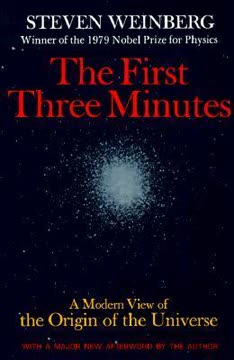

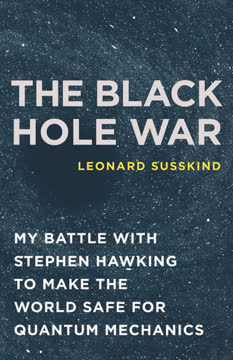

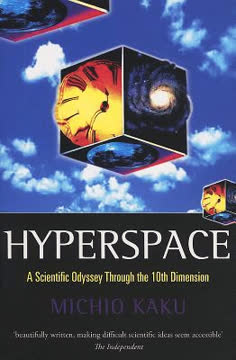
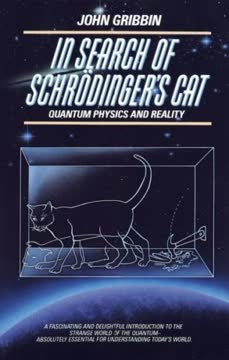
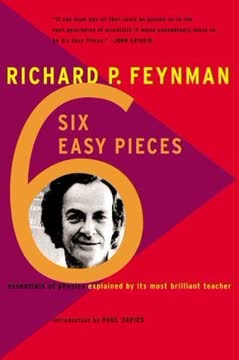
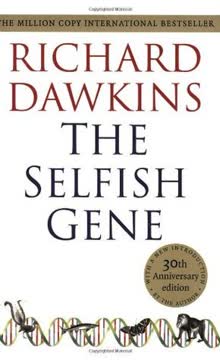
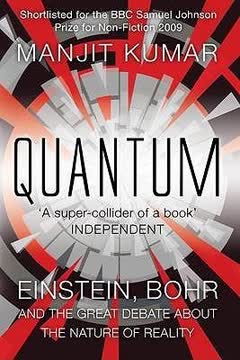
Download PDF
Download EPUB
.epub digital book format is ideal for reading ebooks on phones, tablets, and e-readers.




